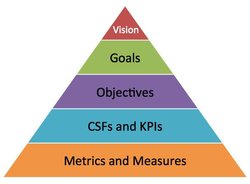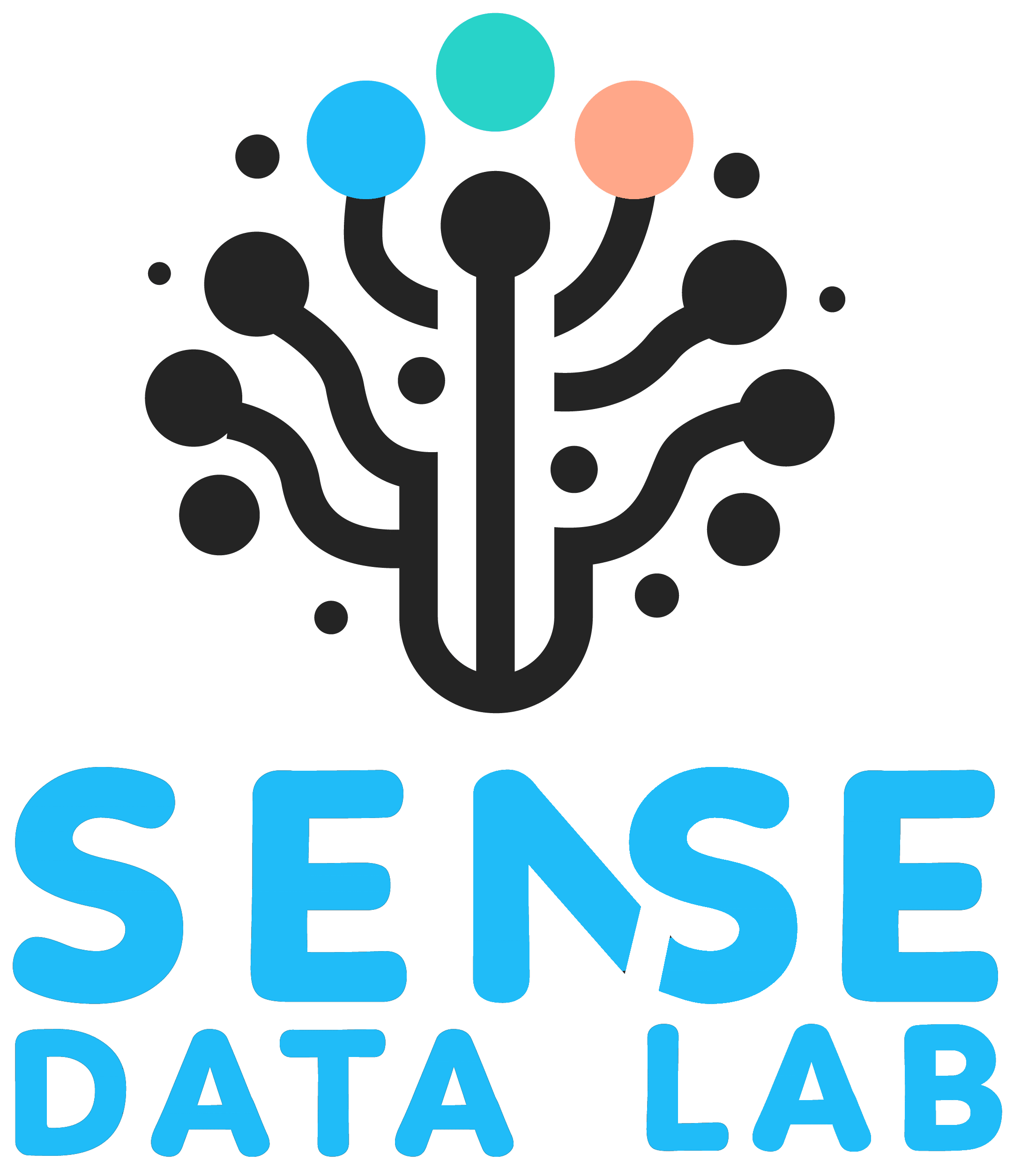In 2015 2.5 quintillion bytes data was being generated on a daily basis and this number has probably increased since then (vcloudnews)
Internet is becoming faster, humans are using more devices and marketers these days have access to an unprecedented amount of data. But rather than clarifying the situation this data explosion has led to quite a bit of confusion particularly when it comes to creating actionable insights.
Aside from silo’d departments not talking to each other a large part of this problem can be attributed to the tracking not being aligned with business objectives.
Organisations may discover that rather than a structured approach things are being tracked on a whim, perhaps at the discretion of some guy who has long since left the business. When it comes to understanding and using your data effectively and align your tracking with your businesses vision, goals and objectives it may be helpful to define understand how they relate to each other.
Below is an excellent representation of the hierarchy of business planning. At the top we have our business vision and all the way at the bottom we have our metrics and measures.

Image courtesy of Smart Insights
Vision
A vision or “a mission statement or vision describes an organization’s purpose and answers the questions “What business are we in?” and “What is our business for?” A vision statement provides strategic direction and describes what the owner or founder wants thecompany to achieve in the future”.
So the overall vision should be defined at the highest possible level and could be considered a kind of business philosophy or core set of value and principles by which a business guides itself by. This will provide a framework for the business to operate in and will guide business goals and objectives.
Goals
Business goals, unlike what you it may look like inside google analytics, should not be a specific metric or key performance indicator. Goals are what your business expects to achieve over a given time period and are broader than your objectives, kpis and metrics.
For digital purposes this could be defined by looking at the purpose of the website and what you are trying to achieve this channel over time. If you struggle to define your goals a helpful way to think of it is “do my goals cover the the 5 s’s of digital marketing?” The 5’s of marketing are:
Sell – Fairly straigtht forward this will be goals related to the amount of conversions you make online, be that monetary or otherwise for example it could be leads delivered from contact forms etc.
Speak – This will be goals related to the communication with customers through your various channels i.e. how are you going to reach your various owned channels and influence them?
Serve– How are you going to aim to serve your customers more effectively using your website? This could be related to customer service or even user experience across your channels i.e. providing live customer chat windows to answer questions or making it easier for customers to purchase products on the checkout page.
Save– how are you going to set out to reduce costs? This could be related to changing the way you communicate with customers i.e. automating certain tasks through integrations which previously relied on manual labour or changing the communication channels from say physical mail to opt in email send outs.
Sizzle– how are you going to build your digital presence to create a positive customer experience?
Objectives
Objectives are more specific and set out to further drill down into your business goals. Essentially objectives set out to give you some targets to aim at and benchmark against. These objectives need to follow the SMARTER principle they need to be:
Specifc
Measurable
Attainable
Relevant
Time bound
On top of this marketers should also
Evaluate
Re-evaluate
KPI’s
KPI’s should not be confused with metrics, whilst KPI’s can be a metric and a metric cannot be a KPI. A KPI or key performance indicator is a measure of how you are tracking against your objective. KPI’s should also be SMART and should be continually evaluated and reevaluated against objectives.
Metrics
Metrics are basically numbers, they are counts or ratios of something that you are tracking. Users of any kind of analytics platforms may be familiar with some of these e..g bounce rates, page views, visits etc.
If we had to pull this hierarchy all together into simple terms it may look like the below:
Vision– Provide customers with the ultimate shopping experience
Goal – Increase conversions across the website
Objective – increase conversions of product x by y% over q2 compared to q1
KPI– Product x performance (this could be a combination of the below metrics to indicate how well the product is tracking towards the objective listed above)
Metrics – Conversions product x, add to cart button clicks on product x, visits to product x’s product page.
There is certainly more to it including aligning teams, creating action plans and getting buy in from internal stakeholders though closely aligning your tracking with your organisations objectives and goals and thinking of it in terms of hierarchy will help you get rid of a lot of noise, furthermore it will help make it easier for you to demonstrate successes, to find out where to make improvements and ultimately make the data more relevant to you as a marketer.
For some additional awesome articles on this you can check out:

Recent Comments